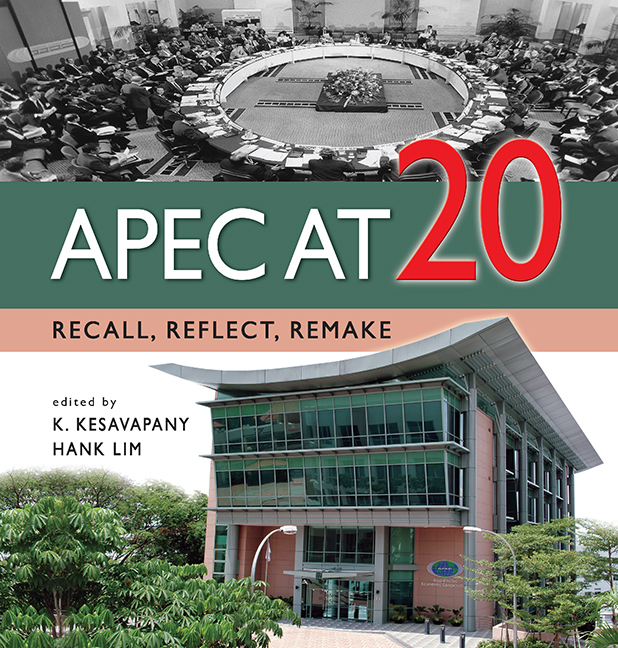Foreword by Ambassador Michael Tay
Published online by Cambridge University Press: 21 October 2015
Summary
Twenty years is not a long time in the life of a regional process. I was involved with APEC at its conception and have returned. Observing the evolution of APEC in the intervening years has been akin to watching patiently the seemingly undirected behaviour of ants in a colony.
APEC in the late 80s was more a desire than a plan of action. You could perhaps detect it in the glint of the eyes of the founding fathers. Their desires were basic and instinctual — to create a process that would give form and shape to the Asia Pacific, to bring growth and prosperity to the region. Yet, arguments raged about the fundamentals of membership, substance and direction.
So, when APEC came into being in 1989, it was with just 12 members in a loose consultative forum, with no organizational structure, without a large bureaucracy supporting it, and with a limited programme of sectoral cooperation.
APEC took a sharp turn in1993 with the first Leaders’ meeting in Seattle. By the following year, APEC had united the region's Leaders around the common goal of free and open trade and investment in the Asia Pacific. This was no mean feat considering the diversity and geo-political heft of its members.
Since then, APEC has grown in depth and scope. With close to 150 meetings, Leaders, officials and businesspeople meet throughout the year to debate and formulate new ways of advancing regional economic integration and to clear the paths for business to navigate across our borders.
Today, many critics still maintain that APEC is hampered by its own rules of consensus decision-making, that targets are aspirational rather than binding and that liberalization is at most unilateral.
I would dispute that summation because it fails to understand that APEC is a complex phenomenon, much like the World Wide Web which also celebrates its 20th anniversary this year. The WWW grew from a scientific project to a global phenomena that has reshaped the way the market works and touched the core of our lives.
- Type
- Chapter
- Information
- APEC at 20Recall, Reflect, Remake, pp. ix - xPublisher: ISEAS–Yusof Ishak InstitutePrint publication year: 2009



